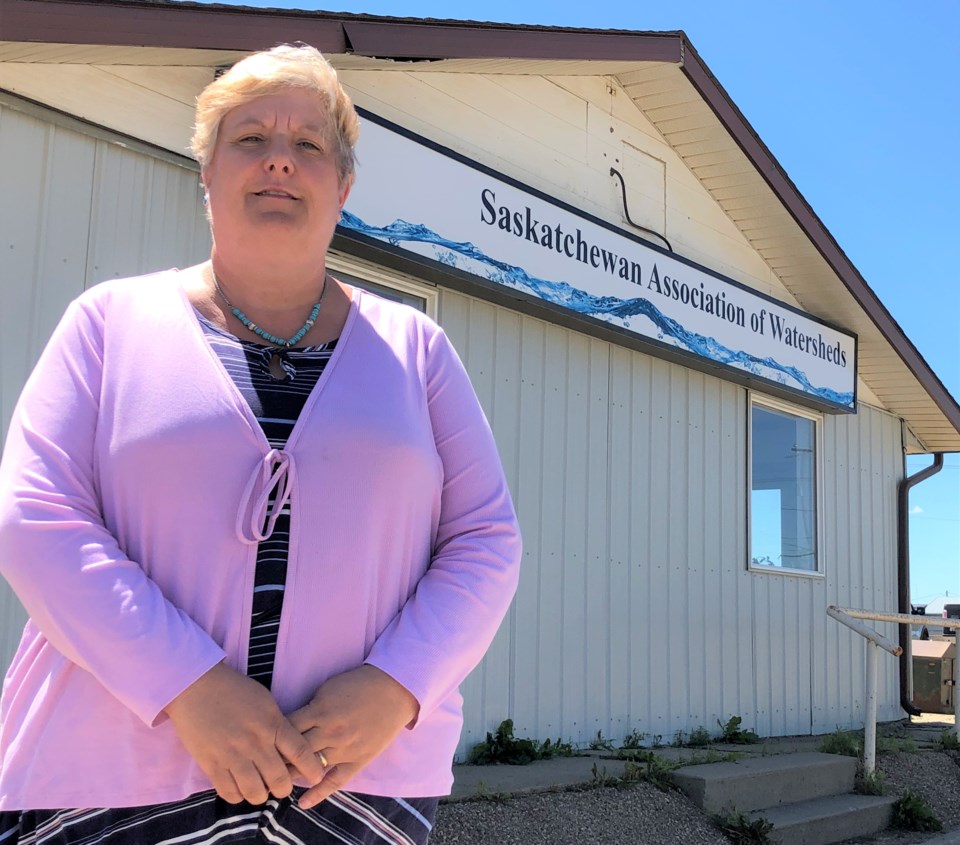A provincial organization that supports the protection and conservation of water has opened a new office in Moose Jaw for higher visibility and to better administer a new climate change program.
The Saskatchewan Association of Watersheds (SAW) started in Regina in 2008 but operated online since it had no physical office, explained executive director Bridget Andrews. The office moved virtually to Moose Jaw in 2014 after she took over because this is where she lived.
Eight years later, the organization — an umbrella group representing nine watershed associations across Saskatchewan — moved into 817 High Street West mid-July. The building is near the Ninth Avenue Northwest intersection and houses Spike Dog and Cat Grooming.
SAW moved there because it signed a two-year partnership worth $37 million with the Manitoba Association of Watersheds to deliver the recently announced federal Prairie Watersheds Climate Program.
This program helps producers in Manitoba and Saskatchewan accelerate their adoption and implementation of on-farm beneficial management practices (BMP) to reduce greenhouse gas emissions, capture carbon, and support production efficiency, sustainability, and resiliency on farms.
The three main BMP streams include improving nitrogen management, increasing the adoption of cover crops and expanding the adoption of rotational grazing.
Andrews was thrilled that SAW now had a physical office, noting the organization has new staff while the building also houses employees with the Moose Jaw River Water Stewards.
“It’s pretty exciting to be able to open and be open to the public and (have) people come in and (for us to) work with urban and rural municipalities,” she said.
SAW chose that location because it is on one of the busiest streets in Moose Jaw and the organization thought clients would notice it more, Andrews continued. Having a physical presence also makes it easier for communities to use the organization’s services than if it were just online.
“It’s pretty important. And it will be nice to bring awareness to our organization because we work so much with protecting ground and surface water quality,” she added.
SAW is important because “water is life” and it desires to protect that liquid while working with Saskatchewan communities to achieve its goals, Andrews said.
Besides the Prairie Watersheds Climate Program, other environmental initiatives SAW is pursuing include selling seedlings through the Tree for Life Program, operating an aquatic invasive species initiative, public education and outreach.
Protecting Saskatchewan’s watersheds is an ongoing effort for SAW that will never stop, while it will continue to work with communities in preserving that resource, said Andrews. She believes the organization and its partners have done a fantastic job working on this issue but knows more can be done, particularly through education, awareness, projects, and partnerships.
Watershed organizations started in 2002, and after 20 years, there is still plenty of growth that can happen, especially since new technology can improve water preservation in urban and rural areas, she continued. Protecting water sources can only happen when those two parties work together in their respective areas.
“It’s when you stop doing things (such as working together) that things fall apart,” she added.
Visit saskwatersheds.ca for more information.




